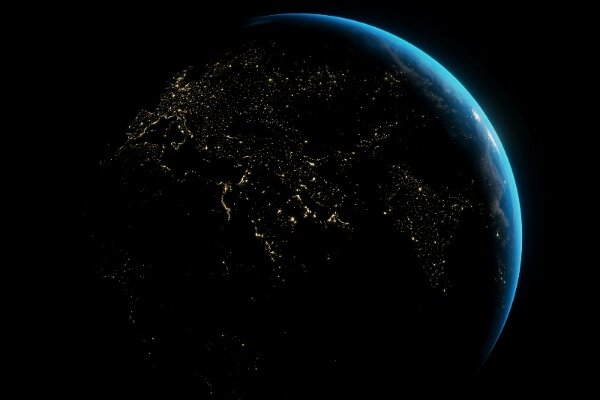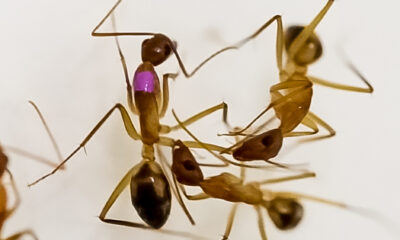Health
5 Eco-Guardians who save our planet behind the scenes

The world needs saviors. While scientists disagree on how devastating the effects of climate change will be, there is no longer any doubt that industrialization has pushed the planet to a dangerous tipping point.
The people who have done the hard work over the years to protect Mother Earth, despite controversy, criticism and outright contempt from skeptics, deserve praise. While few words are enough to say “thank you” for defending humanity’s only habitat, the world should know the names of these five eco-guardians who are saving the planet behind the scenes.
1. The Rainforest Alliance
Did you know that frogs are crucial bioindicators? They give to the health of an ecosystem after a while. That’s why the Rainforest Alliance chose one as its mascot more than 35 years ago. This organization is a leader in protecting one of the largest CO2 eliminators in the world: the Amazon rainforest.
This organization takes a multifaceted approach to their work. Their Rainforest Alliance Certification Program indicates that a product protects forests, climate, human rights and livelihoods. They also work directly in at-risk areas to slow deforestation and support biodiversity. For example, they recently worked with farmers in the buffer zone of one of Indonesia’s national parks to create a wildlife corridor to support endangered elephants.
2. Advanced energy united
Companies often get a bad name because they damage the environment. While industrialization undoubtedly caused the current crisis, many are using their wealth and success to do good from within the system. Advanced Energy United is one such example. Are an association of entrepreneurs united in their mission to achieve 100% clean energy in America.
Their advocacy matters. Because of their private success, they can work with key decision makers at every level of government to advocate for policies that accelerate the energy transition.
While homeowners can convert their properties to renewable energy sources, it takes the combined forces of businesses and governments to manage public utilities such as the electric company. The transition to a 100% clean electricity grid will significantly reduce demand for fossil fuels, as the factories and residential complexes that currently burn coal and oil will soon draw power from the sun and complementary sources such as wind and geothermal energy.
3. Electrification Coalition
Converting homes, factories and brands to green energy will go a long way toward reducing fossil fuel emissions, but what about all those cars and trucks? That’s where the electrification coalition comes into the picture. By means of their involvement in projects such as Climate Mayors EV Purchasing Collaborative, the Electric Freight Consortium, State EV Policy Accelerator and American Cities Climate Challenge aim to facilitate the transition to all-electric fleets.
Their efforts are working. Experts anticipate the sale of electric vehicles will double by 2027, and new top-down guidance from the EPA can further stimulate expansion. The work goes well beyond passenger cars and trucks, including converting semis, buses and garbage trucks as part of the transition. In the future, if you can jog around a city block without inhaling exhaust fumes, you probably have these guys at least partly to thank.
4. Forestry Council
Nearly half of the world’s forests have already disappeared, and the Forest Stewardship Council wants to prevent that number from falling further. Trees are humanity’s best defense against atmospheric carbon, acting as giant scrub brushes to remove pollutants. The FSC currently protects 12% – or more than 500 million hectares – of the remaining forests. Their work is also having an impact, as deforestation has fallen by 40% since 1990.
Forests offer much more than clean air and recreational space. They are home to numerous plant and animal species, some of which may benefit humans but remain undiscovered. Buying goods that bear their label means a product resulted in no net forest loss while protecting fair wages and community rights.
5. Nature conservation
The Nature Conservancy is one of the oldest environmental action organizations started over a century ago in 1915. They began when ecology was still an emerging field of study and top scientists were still debating whether to simply write articles or take more aggressive measures to preserve natural areas. Today they work on a much broader scale to assist in conservation efforts around the world.
For example, they worked with the Dow Chemical Company in 2012 to develop models for valuing nature in business decisions. They recently developed a 50-state climate change strategy, while their Canadian partner has preserved 19 million hectares of Pacific coastline between Vancouver Island and southeastern Alaska. Other projects include converting abandoned mining towns into state parks and protecting the area from chemical spills.
Eco-Guardians who save the planet
The planet needs all the heroes it can get. Fortunately, organizations like the aforementioned have stepped up to the plate to help with conservation efforts. Supporting them in their missions and praising them for their work is just a thank you for protecting the only habitat humans have.
 Author biography
Author biography
Oscar Collins is editor-in-chief of Modded, where he writes about health and fitness. Follow him on Twitter @TModded for regular updates on his work, and subscribe to Modded Minute for more!













